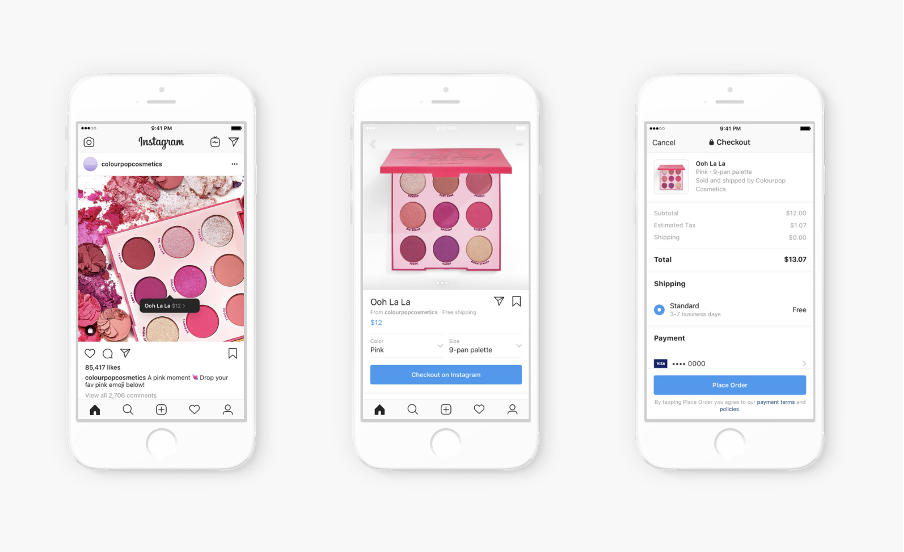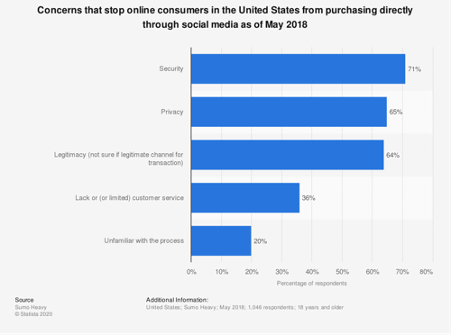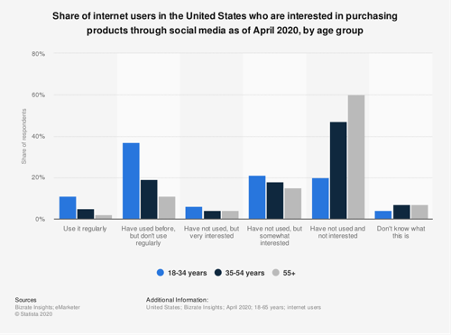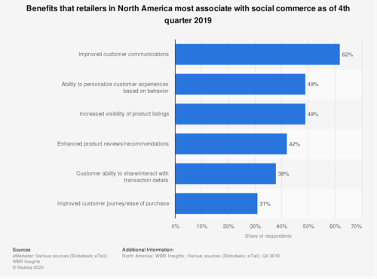Social Commerce FAQ
Shoppable posts, built-in product catalogs, and native payment systems are just a few of the many technological advancements happening in social commerce right now.
It’s safe to say it’s a fast-changing landscape!
But what’s the difference between social commerce and ecommerce? And why is the rise of social commerce inevitable?
In this social commerce FAQ, the Loomly Team answers those questions, and more.
TABLE OF CONTENTS
- What does social commerce mean?
- Why is social commerce important?
- What is the difference between social commerce and ecommerce?
- What are the benefits of social commerce?
- What are some concerns around social commerce?
- Why is the rise of social commerce inevitable?
- How does commerce happen on social media?
- How do you take advantage of social commerce as a brand?
What does social commerce mean?
Social commerce refers to the process of buying and selling products directly on social media platforms.
The entire shopping experience – from product discovery to the checkout – takes place on a social media platform, such as:
- Marketplace on Facebook
- Catalog on WhatsApp
- Facebook Shops
- Instagram Shopping

Why is social commerce important?
Social commerce encourages people to connect with a business through two-way communication. This allows customers to not only engage with your business, but it also gives them the opportunity to use social media as an efficient customer service channel where it’s possible to solve problems.
What is the difference between social commerce and ecommerce?
Ecommerce, also known as electronic commerce or internet commerce, is buying and selling products or services through the Internet.
Customers select the goods through photos or product descriptions provided by the seller. After that, the goods are delivered to the customer either physically or digitally, depending on the type of product or service.
Social commerce is similar to ecommerce except the sales process takes place directly on social media platforms. There’s no requirement for the shopper to transfer to an ecommerce checkout on another website.
Simply put, traditional commerce takes place in a physical store, ecommerce takes place on a website, and social commerce takes place on social media platforms like Facebook or Instagram.
What are the benefits of social commerce?
The major benefit to both customers and merchants is social commerce’s ability to streamline the sales process and drastically reduce friction.
Consumers can browse their social feed, see something they like, and make an instant purchase without being redirected to another website.
Using social commerce platforms, brands can:
- Connect with users directly.
- Sell products to customer without them having to leave the platform.
- Build on the trust provided by an established platform.
- Retarget customers who have already expressed interest in products.
- Make shopping a social experience as shoppers consult with their friends.
What are some concerns around social commerce?
The biggest concern that stops US shoppers from purchasing directly through social media is security.
Other risks and considerations are:
- Security: 71% are concerned this a safe place to buy online.
- Privacy: 65% are unsure if details remain private as it’s social media.
- Legitimacy: 64% are unsure if it’s a legitimate channel for transactions.
- Service: 36% are worried about a lack of customer service on social media.
- Familiarity: 20% are unfamiliar with the shopping process on social media.

Why is the rise of social commerce inevitable?
Young people determine what is trending culturally, and consequently, what drives demand in consumer markets.
Generation Z spends 2-3 times more shopping on social channels than the average consumer, with Instagram and Snapchat taking the lead, while Generation X prefers shopping on Facebook.
In the US, 37% of the 18-34 age group have purchased products via social media before but don’t use it regularly, while 11% said they used it regularly:

What’s clear is that the rise of social commerce is inevitable, driven by the changing cultural and consumer preferences of younger generations.
How does commerce happen on social media?
Social commerce sells products directly through social media networks. It differs from social media marketing because rather than redirecting users to an online store, you’re offering them the ability to checkout directly on the social platform.
From Instagram shoppable posts to Facebook product tags, Pinterest rich pins, YouTube cards, and TikTok shoppable ads, it’s never been easier or more efficient to sell on social media.
Further technological advancements, such as built-in product catalogs and native payment systems, mean brands of all sizes can take advantage of social commerce without expert skills or significant investments.
How do you take advantage of social commerce as a brand?
There are several ways in which brands can take advantage of social commerce.
In a survey by eMarketer, 62% of US retailers said “improved customer communications” was the biggest benefit of social commerce. A further 49% said the “ability to personalize customer experiences based on behavior” was another major advantage.
Here’s the full list of benefits:
- Improved customer communications = 62%
- Ability to personalize customer experiences based on behavior = 49%
- Increased the visibility of product listings = 49%
- Enhanced product reviews/recommendations =42%
- Customer ability to share/interact with transaction details = 38%
- Improved customer journey/ease of purchase = 31%


Manage all your social media accounts in one place.
Craft, schedule, & auto-post content to all your social channels, then track analytics and manage interactions from a single, easy-to-use dashboard.
Social Commerce in a Nutshell
As the entry barriers keep falling, more and more brands will transition to, and take advantage, of social commerce.
As we spend more time on social media, consumer confidence, especially with the younger generation, will grow so that social commerce becomes the norm.



